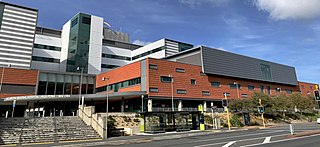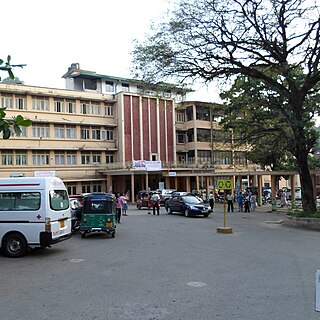Nursing assessment is the gathering of information about a patient's physiological, psychological, sociological, and spiritual status by a licensed Registered Nurse. Nursing assessment is the first step in the nursing process. A section of the nursing assessment may be delegated to certified nurses aides. Vitals and EKG's may be delegated to certified nurses aides or nursing techs. It differs from a medical diagnosis. In some instances, the nursing assessment is very broad in scope and in other cases it may focus on one body system or mental health. Nursing assessment is used to identify current and future patient care needs. It incorporates the recognition of normal versus abnormal body physiology. Prompt recognition of pertinent changes along with the skill of critical thinking allows the nurse to identify and prioritize appropriate interventions. An assessment format may already be in place to be used at specific facilities and in specific circumstances.

Established in 1870 as the Colombo Medical School, the Faculty of Medicine of the University of Colombo, is the second oldest medical school in South Asia. It is considered to be the top most medical faculty in the country which requires the highest entry qualification in GCE Advanced Level examination.

Alice Ho Miu Ling Nethersole Hospital (AHNH) is an acute district general hospital managed under the New Territories East Cluster of the Hospital Authority in Hong Kong. Established by the former London Missionary Society in 1887, it was the first teaching hospital in Hong Kong to train Cantonese locals in Western medical science. It moved to its current location in Tai Po in 1997.

The Lady Ridgeway Hospital for Children is a tertiary care children's hospital in Colombo, Sri Lanka. With a bed-strength of over 1200, it is now considered to be the largest children's hospital in the world. Established by public subscription in 1895 as the Lady Havelock Hospital for Women and Children, it was named the Lady Ridgeway Hospital for Children in 1910. Both these distinguished ladies were the respective wives of successive British Governors in Ceylon - Sir Arthur Havelock and Sir Joseph West Ridgeway.

Wellington Hospital, also known as Wellington Regional Hospital, is the main hospital in Wellington, New Zealand, located south of the city centre in the suburb of Newtown. It is the main hospital run by Te Whatu Ora, Capital, Coast and Hutt Valley.

General Sir John Kotelawala Defence University (KDU) located at Kandawala, Ratmalana, Colombo, is the state defense university of Sri Lanka which is administered by the Ministry of Defense.

Lanka Hospital is multi-speciality tertiary care hospital in Sri Lanka and is one of the largest private hospitals in the country. It is a subsidiary of Sri Lanka Insurance Corporation. The company's previously owned by Apollo Hospitals. It was founded by Dr Pratap C. Reddy in India. It is situated on Elvitigala Mawatha, also known as Baseline Road, which is a direct route from Colombo's international airport. It is also only a few minutes drive from central Colombo. The hospital was commissioned in 2002 as a branch of Apollo Hospitals India. The hospital was taken over by Sri Lanka Insurance in 2006. In 2009, it was renamed Lanka Hospitals after it ended a licensing and support services agreement with Apollo Hospitals.

National Hospital Kandy is the second largest hospital in Sri Lanka. The bed strength of the hospital was 2291, as of 2011. In 2019, Teaching Hospital Kandy was upgraded as the second National Hospital of Sri Lanka.

A hospital is a healthcare institution providing patient treatment with specialized health science and auxiliary healthcare staff and medical equipment. The best-known type of hospital is the general hospital, which typically has an emergency department to treat urgent health problems ranging from fire and accident victims to a sudden illness. A district hospital typically is the major health care facility in its region, with many beds for intensive care and additional beds for patients who need long-term care.

Sri Lanka has a free and universal health care system. It scores higher than the regional average in healthcare having a high Life expectancy and a lower maternal and infant death rate than its neighbors. It is known for having one of the world's earliest known healthcare systems and has its own indigenous medicine system.

Deshamanya Vidya Jyothi J.B. Peiris, FRCP is Sri Lankan neurologist. He was the founder of the Institute of Neurology, Chairman of the Sri Jayewardenapura Hospital and has been an executive Director of the Postgraduate Institute of Medicine.
The Shoalhaven District Memorial Hospital often shortened to Shoalhaven Hospital is a public hospital serving the City of Shoalhaven in New South Wales, Australia. It is located on the banks of the Shoalhaven River 1 km (0.62 mi) from the Nowra CBD. The secondary health care facility is the main acute care hospital for the region, serving a population of over 100,000. The hospital is operated by the Illawarra Shoalhaven Local Health District In the 2009–2010 financial year, SDMH handled 21,193 hospitalisations. It is also affiliated with the University of Wollongong and University of New South Wales as a teaching hospital.
Karapitiya Teaching Hospital located in Karapitiya, Galle is the largest Tertiary care centre in the Southern Province of Sri Lanka. It was established in 1982 and is the main training facility for the Faculty of Medicine, University of Ruhuna. The hospital consists of 2,066 beds, 54 wards and several other units. It is the third largest tertiary care hospital in the country. Karapitiya Hospital meets the health needs of people in Southern Province and also provides services to the people of the surrounding areas. In 2024, it was proposed to be renamed as Galle National Hospital.

Western Hospital is a private hospital located in Colombo 8, Sri Lanka that specializes in renal disease care, dialysis and transplantation. Initially opened to provide kidney care services to Sri Lankan patients, Western Hospital has now diversified to providing general health care services, and is one of the many private hospitals in Colombo, Sri Lanka. As of December 2022, the hospital is currently accused of involvement in duping organ donors into donating their kidneys. The hospital management has denied involvement in any such selling/buying of organs, which might or might not have occurred between donors and receivers.

Andover War Memorial Hospital is a community hospital in Andover, Hampshire. The hospital provides inpatient rehabilitation, day hospital services, a minor injury unit and an outpatient unit. It is operated by Hampshire Hospitals NHS Foundation Trust, but some services are provided by Southern Health NHS Foundation Trust. The Countess of Brecknock Hospice is located on the same site as the hospital. The independent regulator of health and social care in England, the Care Quality Commission, rated Andover as "requires improvement" overall in 2018.

Base Hospital No. 20, located in Châtel-Guyon, France, was one of the hundreds of Base Hospitals created to treat soldiers wounded during the First World War. It was created in 1916 by the University of Pennsylvania and served the American Expeditionary Forces (A.E.F.) until 1919.

The Transvaal Memorial Hospital for Children, based in Johannesburg, was the first dedicated children's hospital in South Africa when it opened in 1923. The hospital would remain open until 1978 when its functions were moved to the then newly opened Johannesburg General Hospital. The building is a heritage listed monument and parts of the building are currently used by community groups dedicated to the service of children.
The Office on Missing Persons (OMP)' is a Sri Lankan government department tasked with bringing closure to suffering victims and their relatives by determining the status of all missing persons in Sri Lanka. It is the first pillar of four "Transitional Justice mechanisms" proposed by the Sirisena–Wickremesinghe administration in the aftermath of the Sri Lankan Civil War. The Office On Missing Persons Act, No. 14 of 2016 provides for:
"...the establishment of the office on missing persons; to provide for the searching and tracing of missing persons; to provide assistance to relatives of missing persons; for the setting up of a database of missing persons; for setting out the procedures and guidelines applicable to the powers and functions assigned to the said office; and to provide for all matters which are connected with or incidental to, the implementation of the provisions of this act.
Kingston Public Hospital (KPH) is a public general hospital in Kingston, Jamaica. It is the oldest public hospital in Jamaica and is the main hospital in south eastern Jamaica. The hospital is operated by the South East Regional Health Authority on behalf of the Ministry of Health, Jamaica.
The Tambo Memorial Hospital is a regional hospital located in Boksburg (Ekurhuleni) in Gauteng Province, South Africa.
















